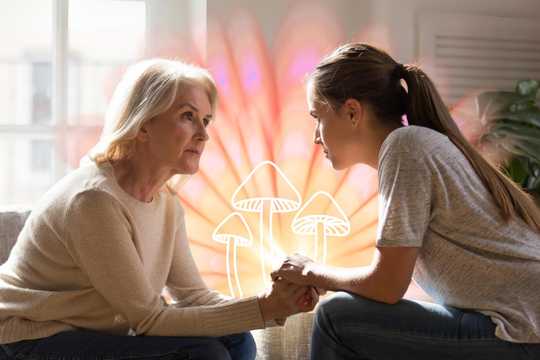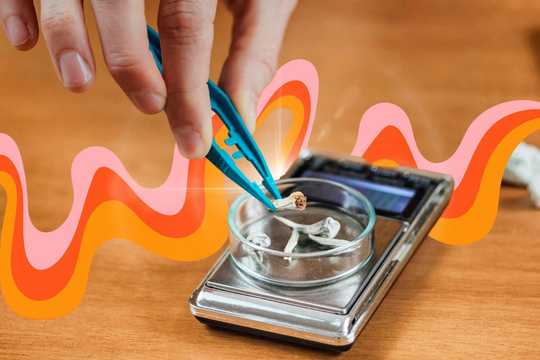In May 2017, the first psychedelic integration circle was hosted in Los Angeles. The purpose was to create a safe space for people to talk about non-ordinary states of consciousness and offer emotional support. In addition, individuals who use psychedelic substances were offered educational information, and harm reduction strategies. Nearly three years later, PsychedeLiA: Psychedelic Integration, a Los Angeles’ peer-led integration circle meets multiple times a week. Meetings are held across the greater LA area drawing anywhere from 3 to 30 people per meeting. In other words, there is a high demand for these gatherings, and a primary response received from new guests is that they wish they knew about the circles sooner.
Though we are completely out of the psychedelic closet, I sometimes half-humorously refer to PsychedeLiA’s integration circles as “Psychedelics Anonymous”, simply because the organic evolution of our meetings seems to have surpassed the original intentions. The circles have become somewhat of a subculture, becoming the primary place to meet “The Others” intimately.
With meetings open to the public and the guest composition completely spontaneous, no circle is ever the same. They are typically a blend. In other words, a mix between regulars that have been with us since the beginning and newbies that just recently found us through a Google search. The personal psychedelic experience ranges from curious after reading Michael Pollan’s (2018) How to Change Your Mind to decades of use of various substances.
How Structured Circles Work
The structured circles (see details below) always start with an intention to “co-create the space.” For instance, we share experiences, stories, and dilemmas. In addition to those, we also share concerns, hesitations, ideas, questions, information and news. Some members come in with the intention of silent presence to show solidarity and support with the community. We’re like a tribe sitting around the fire. Through our different, gathered voices a theme is woven. For example, we discuss topics such as ego transcendence, spiritual emergence, and samadhi states. We also cover personal traumas, struggles, and safety preparation techniques.
Similar to other genre-specific meetups the attracted crowd seems to share similar philosophies, outlooks, values and lifestyle aspirations. More than an evening social event, the personal relationships forged over time support the members’ ongoing integration journey. The event also provides accountability measures and feedback to the progress (or lack thereof). In the containment provided by the circle, guests gently explore relationships through a live connection to the collective consciousness. Something many attendees have witnessed through psychedelic exploration. As a result, deep friendships can be forged. They often extend well beyond the circles as members recognize one another to be part of the same tribe. Above all, we have come to realize the community bonding can in fact be the medicines’ most potent healing property.
If you’re interested in starting psychedelic integration circles in your area and not sure where to begin, here are some basic guidelines.
Preparing & Planning
- Make decisions: on ideal size of group, duration, frequency, cost, rules of conduct and structure of meeting.
- Prepare materials: laminated name and contribution signs (if you are taking donations to cover meeting costs), group rules and guest sign in sheets. Gather objects for your sacred altar and a talking stick. A kettle for tea, tea selection and cups.
- Reserve location: can be a local event space, yoga studio, a park or your living room. Anywhere that is inviting and accessible will work. Though not necessary, I personally have a preference for closed spaces as they feel more contained and thus impact the depth of conversation.
- Advertise: For instance, through Meetup, Facebook, Instagram, Eventbrite, yoga/meditation studios, conscious businesses in your area. Collaborate with other local psychedelic organizations. You can also build a free website and integrate a calendar. Gather emails through the sign in sheets to create a mailing list.
- Consistency is everything: hold the circles at predictable times (e.g. first Wednesday of the month at 6-8 pm). This makes is easy for guests to plan ahead without waiting for a meeting announcement.
Setting Up
- Arrive 30 minutes prior to the beginning of your circle to set up room in a circle format with pillows, back jacks or chairs, an inviting tea corner.
- Have a welcome table with a sign in sheet, group rules, payment contribution bowl with sign, cards, list of additional support resources (help hotlines, local emotional support organizations, integration professionals).
- Arrange altar that includes sacred objects, flowers and a talking stick, if this feels like a suitable option for the group.
- May play soft music to set mood at entrance and replay at end of circle as guests interact and network.
Welcoming Guests
- It is highly recommended guests be restricted to those over 18 years old and who are presenting as completely sober (i.e., not under the influence of any substances).
- Welcome every guest warmly, make sure they have arrived to the right event and ask them how they heard of it, for advertising reference.
- Encourage guest to sign in legibly, read the rules and provide their contribution as they enter the room. As a community led group, a suggested donation amount should be fair and in line with providing access to people regardless of their financial situation (i.e., optional or minimal donations). Typically rules cover, at a minimum, confidentiality of attendees and respectful communication within the group.
- Though not necessary, a no-shoe policy may add to the cozy/comfortable feel of the gathering.
- As guests settle in, encourage them to introduce themselves to other guests in the room and make new friends.
- Circles should start and end on time.
- Consider not allowing entries 15 minutes past the start time of the circle (unless guests drove from far away/got stuck in abnormal traffic). Late entries will potentially compromise the safe container of the circle and all guests will be affected by latecomers.
Facilitating the Circle
- Circle leaders are peers that are ideally personally experienced with non-ordinary states of consciousness, familiar with various psychedelic substances and not only knowledgeable about psychedelic integration but are a testament to it. This guideline, of course, can be interpreted in various ways; my interpretation of a well-integrated person is a grounded, present, authentic and happy individual that embodies medicine wisdom, a person who one would want to learn from and potentially emulate in some ways.
- Maintain a sense of non-judgmental and kind presence, make eye contact and remain open and approachable. Listen attentively to the circle conversation.
- Allow the circle to flow naturally; make room for silence.
- Keep an eye on time and make sure every guest has an opportunity to share and contribute, including toning down dominant participants. You may wish to use a timer and allow each member a set number of minutes to share.
- Attempt to not intervene in the circle content, unless some of the information that is presented is factually inaccurate (opportunity for an educational moment).
- The objective of the community integration circles is to offer a peer-support environment. While peer-led groups have a myriad of benefits they are not substitutes for therapy or professional mental health services; do not attempt to provide either. If you recognize a situation that you feel could be better addressed by a professional, offer a reference to a friendly resource, Psychedelic Support Network or MAPS Integration List.
- Encourage community connection and networking following the circle.
PsychedeLiA Integration Community Circle – An Example Group Structure
- Welcome by leader, personal introduction
- Definition of “psychedelic integration”
- Mission purpose of the organization
- Legal disclaimer
- Centering meditation
- Guest introductions and intentions round
- Group rules (read aloud)
- Community integration circle
- Conclusion & final announcements
- Community mantra, gratitude & contribution reminder
In conclusion, my hope is that this information serves other communities well as we strive to safely and mindfully navigate the process of collective and psychedelic integration.






